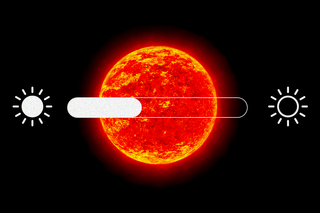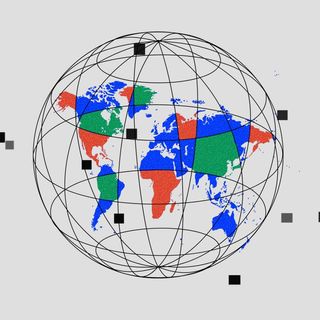
The U.S. May Research Dimming the Sun as a Climate Solution. What’s the Fallout?
As the world inches towards climate tipping points, scientists are taking serious note of geoengineering solutions.

Last month, the White House Office of Science and Technology Policy (OSTP) announced a five-year research plan to study geoengineering – the most controversial solution to climate change that has long been considered a last resort. It would involve large-scale interventions in our planet’s natural systems, with the aim of manipulating the climate to cool the Earth. CNBC reported that the research plan is only a “preliminary step” at the moment, “but it’s notable the White House is formally engaging with what has largely been seen as the stuff of dystopian fantasy.”
The New Yorker reported that while the implementation of geoengineering solutions is still a while away, some scientists are looking to speed up this process with at least three initiatives currently studying solar radiation management, or in other words, how to dim the sun.
According to the Daily Beast, the report will specifically look at solar radiation management, or the spraying of aerosols into the atmosphere to reflect sunlight away from the planet, reducing temperatures. In theory, it might sound like a neat solution to addressing the climate crisis. However, the ethical implications of such an undertaking are vast, not to mention the risks associated with meddling with Earth’s atmosphere. Still, as the world inches towards overshooting emissions targets that could set off irreversible climate tipping points, geoengineering is becoming a subject of serious study among scientists. They believe the time might have come to understand how such solutions might be deployed in the future.
Over the years, several geoengineering plans have been proposed, ranging from building giant mirrors in space to reflect sunlight, to “cloud brightening,” which involves spraying sea salt crystals into the air to increase cloud reflectivity. However, the proposed solution that seems to have gained most popularity is the injection of aerosols into the stratosphere. The idea here is that atmospheric aerosols will reflect sunlight and reduce temperatures, mimicking the cooling that is witnessed after volcanic eruptions.
Related on The Swaddle:
Climate Change Has Made 75% of Indian Districts Vulnerable to Extreme Weather: Study
While aerosols might bring down temperatures, interfering with the Earth’s natural systems could trigger drastic changes. On a global scale, it could damage the ozone layer, change the quality of light plants use for photosynthesis, and affect food security, Bill McKibben noted in The New Yorker. However, most impacts would be more local, where changes in weather and rainfall patterns would “produce different and hard-to-predict outcomes in different places.”
It could cause floods in one area, and droughts in another. According to an article in Yale Environment 360, aerosol injection could cause the Asian monsoon to shut down, drastically impacting 2 billion people. Research published earlier this year revealed how geoengineering deployment could increase malaria in lowland areas of Africa and Asia, while reducing transmission in other regions, noting that these strategies “are not guaranteed to unilaterally improve health outcomes, and could produce regional trade-offs among Global South countries that are often excluded from geoengineering conversations.”
“A climate ‘solution’ that helps some and harms others could spark its own kind of crisis,” McKibben wrote. Its negative consequences may very well be concentrated in the Global South – countries that are already experiencing the adverse impacts of climate change despite having historically contributed the least amount of anthropogenic emissions. Any geoengineering solution will then have to take into account a central component of climate action that is only now receiving due attention – that of climate justice.
The murky ethics of tech-based solutions are perhaps why previous attempts at testing these strategies have been shut down – such as the balloon that was supposed to be launched into the stratosphere by Harvard researchers. However, as the worst-case scenario of a warming world fast approaches, geoengineering is moving from the fringes of climate action discourse to the mainstream. It even made it into discussions held at COP 27.
It is widely accepted that there is no alternative to reducing greenhouse gas emissions. However, progress on this front has been slow, as a recent report by UN Climate Change shows. “We are still nowhere near the scale and pace of emission reductions required to put us on track toward a 1.5 degrees Celsius world,” said Simon Stiell, Executive Secretary of UN Climate Change.
The spate of climate disasters has been increasing year on year. The devastating floods in Pakistan, Hurricane Ian in the US, extreme heatwaves and resulting drought in Europe, and natural disasters being recorded almost everyday in India were some of the extreme climate events witnessed just this year. Marcia McNutt, president of the National Academy of Sciences, which is studying sunlight reflection technologies, told Yale E360, “We are running out of time to mitigate catastrophic climate change. Some of these interventions… may need to be considered in future.”
Related on The Swaddle:
Pakistan’s Floods Stir Debate on ‘De‑growing’ the Economy To Address Climate Change
However, even researching such strategies has raised concern among some for posing a “moral hazard.” Experts say geoengineering may suggest an “easy fix” that “may well encourage weaker action on emissions reduction.” Janos Pasztor, executive director of the Carnegie Climate Governance Initiative told CNBC, “You cannot judge what the country does on solar-radiation modification without looking at what it is doing in emission reductions, because the priority is emission reductions… Solar-radiation modification will never be a solution to the climate crisis.”
Geoengineering as a strategy to address the climate crisis reveals our dependence on tech-based solutions. As Anote Tong, former president of the island-nation of Kiribati told The New Yorker, it is a “prime example of our arrogance in our capacity to shape nature to our whims with technology.” However, the mainstreaming of calls to dim the sun as well as the US government urging research in this space reveals the need for urgent climate action to stem the rapid pace with which we are hurtling towards disaster. As Tong stated, “Geoengineering as a possible solution to this catastrophe will definitely become the only option of last resort if we as a global community continue on the path we have been going. There will be a point when it has to be either geoengineering or total destruction.”
Ananya Singh is a Senior Staff Writer at TheSwaddle. She has previously worked as a journalist, researcher and copy editor. Her work explores the intersection of environment, gender and health, with a focus on social and climate justice.
Related


The Internet Isn’t as Borderless as It Seems. Some Have Begun to Call It the ‘Splinternet’
